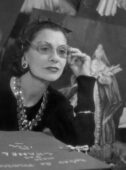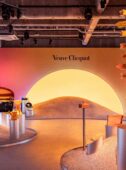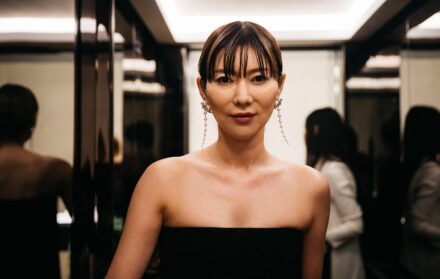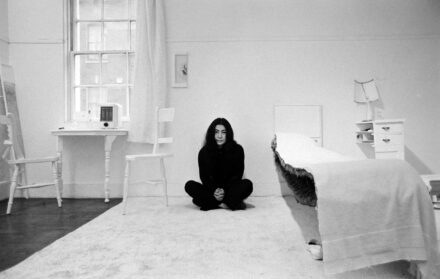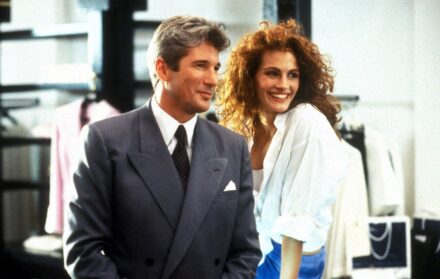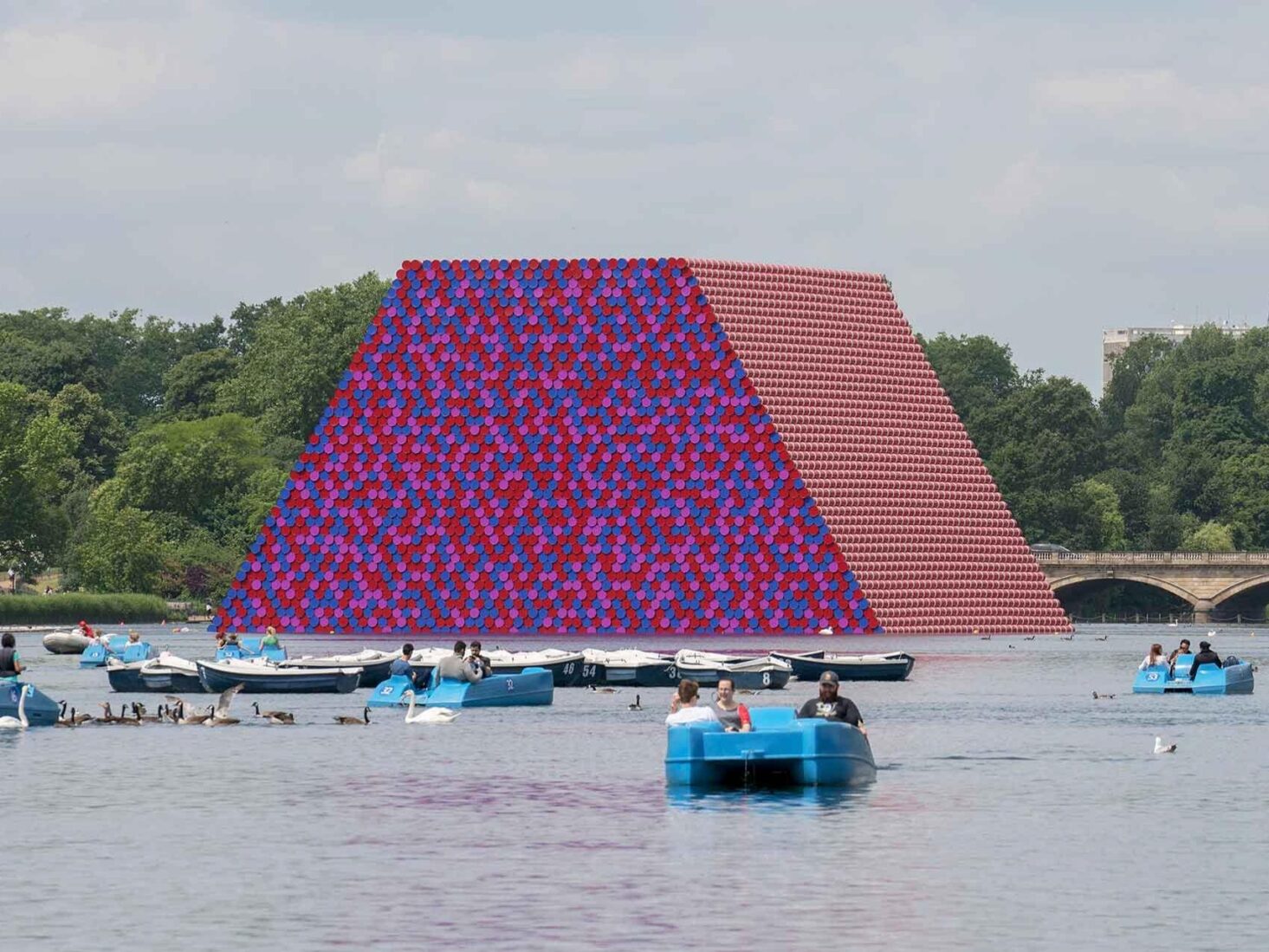
Christo On His Floating Masterpiece, The London Mastaba
For six decades, the self-funded installation artist Christo Vladimirov Javacheff has been constructing large-scale artworks that challenge ideas of space and place. Now, he brings his unique brand of big art to London’s Serpentine
It is made of 7,506 barrels painted in hues of blue, mauve and blood red. It is 20 metres high. And it is currently floating on the Serpentine in Hyde Park. It is, as its description suggests, a grand spectacle that opened to much fanfare last month. But then Christo, the artist behind the work – currently being celebrated in a major retrospective at the Serpentine Gallery until 9 September – deals in the spectacular.
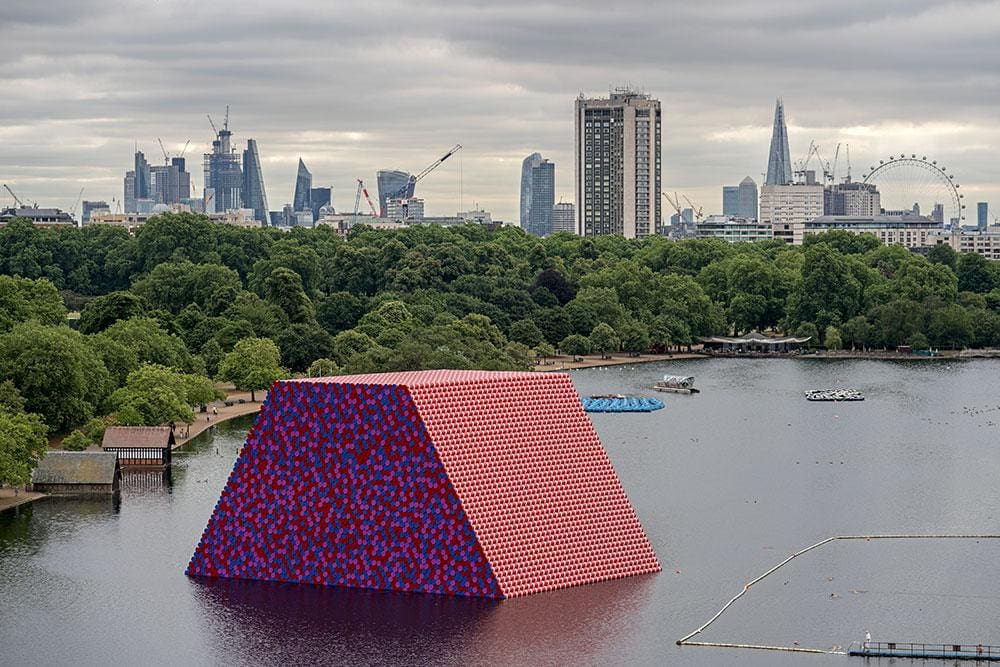
Small wonder that, when in 2016 the Bulgarian émigré – full name Christo Vladimirov Javacheff – created a bright-yellow floating pier that crossed Lake Iseo, Italy, from the coastline to the island at its centre, some 250,000 people turned up in the first five days to enjoy the sensation of walking on water. “But building a structure like that isn’t difficult. These works don’t have the complexity of, say, a skyscraper or a bridge. The difficulty,” laughs Christo, “is finding a country that will let you put a fabric walkway over depths of more than 90 metres without also putting up rails…”
Christo, now 83, has spent his career – much of it, until her death in 2009, in collaborative partnership with his wife Jeanne-Claude de Guillebon – creating monumental pieces. He (or they) is the artist who in 1968 used one million square feet of synthetic fabric to wrap 1.5 miles of the Sydney coastline; who in 1971 – arguably his most famous work – wrapped the entire Reichstag in a polypropylene sheet; who in 1972, hung 200,200 sq ft of orange fabric across the Colorado Valley. A Christo work is typically years in the planning, yet on display to the public, for free, for little more than a fortnight.
“[Each work] is precious for being brief, which is true for everything really,” Christo explains. “These days we’re bombarded with the banality of things – it’s the same thing over and over. Yet the fact is that you can’t repeat the moment. It’s here and then it’s gone. And we never repeat a work. Of course, because each of our projects is much longer than the time it’s on view, for us every one is a journey. Often they don’t come off. We’ve realised 23 projects over 50 years, but haven’t managed to get permission for 37 others. But that’s not bad, considering we’re dealing with the real world – real things in the real cold or real wind, that have real size and cover real kilometres in public space.”
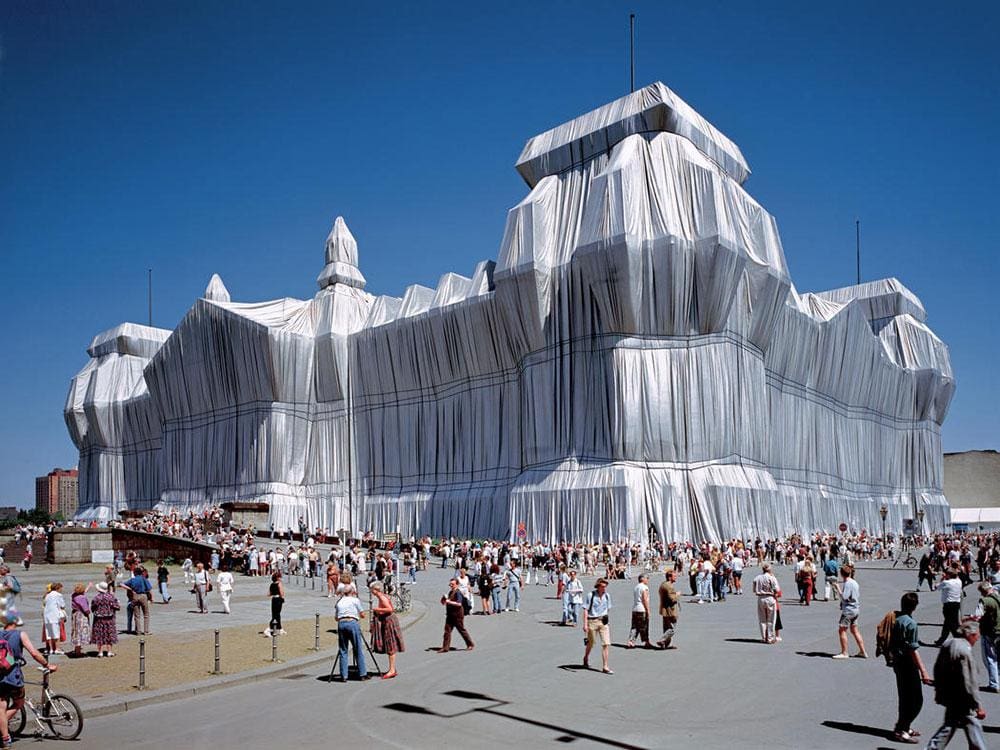
Indeed, much of Christo’s work is an unintentional commentary on the commonplace 21st-century experience of dealing with maddening bureaucracy. It took 16 years and three appeals to the German government before the whole issue escalated as high as a vote in Parliament, which finally gave permission for Wrapped Reichstag. Elsewhere, The Mastaba – what would be the world’s largest sculpture, set in the desert near Abu Dhabi, the size of two Giza pyramids – has been almost 40 years in development and still isn’t certain. The London Mastaba is a trial run for that project. although only an eighth of the size.
“Both Jeanne-Claude and I loved the desert, so we’ve been particularly passionate about this one, and it’s probably the one I’ve spent most time and money on,” says Christo. “It will happen. But then I’m an eternal optimist.”
His insistence that none of his works are used for commercial gain by others has not only seen him decline hefty pay-days – the Three Tenors, for example, wanted to perform a concert in front of one of Christo’s pieces – but has often meant that he’s felt the need to create a kind of commercial exclusion zone around his works by ‘renting out’ every business in a 1km radius. “That alone can cost millions,” he notes. “You soon find out that every square foot is owned by someone somewhere.” Certainly just making the works happen is an expensive business.
In 2017, Christo pulled the plug on a proposed piece in the wilds of Arizona after realising that this would mean working closely with Donald Trump’s administration. This was after years of planning work with previous administrations and – more painfully – after having spent $40m.
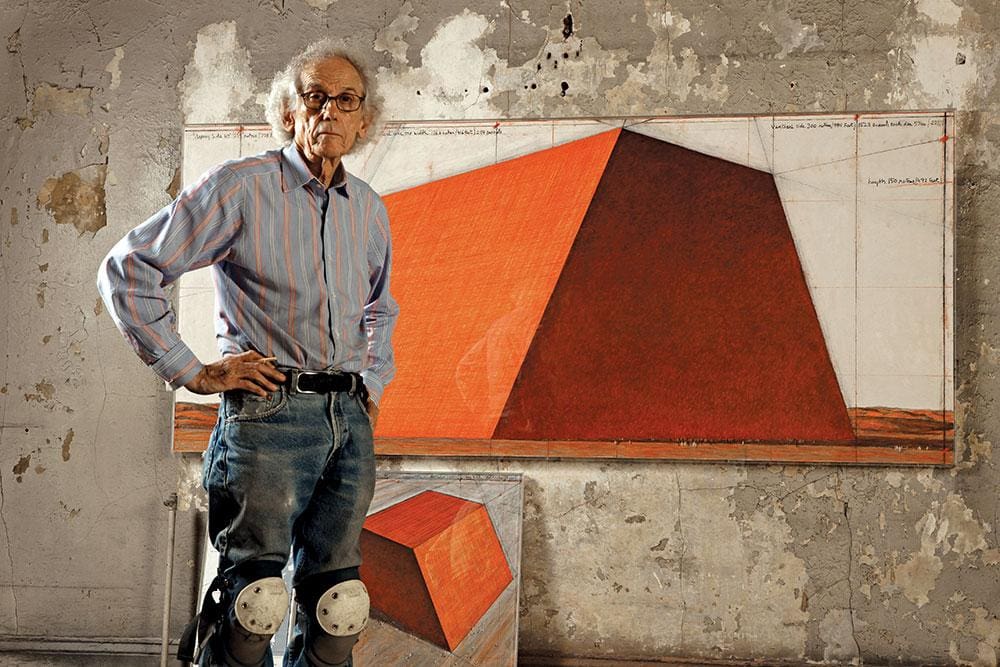
“Most works are very expensive anyway to produce because they’re complex – you have to hire the services of so many people. The payroll costs are huge,” says Christo. “But in this case, well, the decision was a reflection of my freedom. As I said, everything in the world is owned by somebody and this stretch of Arizona is no different – it’s owned by the US Federal Government. When we started the ‘landlord’ was Clinton, then Bush Jnr. – we had a terrible time with him but kept going – and it got better with Obama because he had people around him who knew our work. But now we have Trump – and that’s one landlord I don’t want to deal with. [Walking away is] not easy, but it’s OK, we have other projects.”
Christo’s wisdom has surely come with age. The lost money he just brushes off happens to be his own. And he likes it that way. Christo escaped from the Communist rule of Bulgaria when he was 21 by bribing a railway guard to let him hide away on a train that was crossing the border into the capitalist west. This was no statement of the artist’s preference for that particular financial system, so much as some hope that it would at least allow him to be left alone. “I escaped from Bulgaria when I was young and was eager to be an artist away from Communist oppression. Above all, I wanted to do what all artists want to do – to exist outside of any system that wants to control me.”
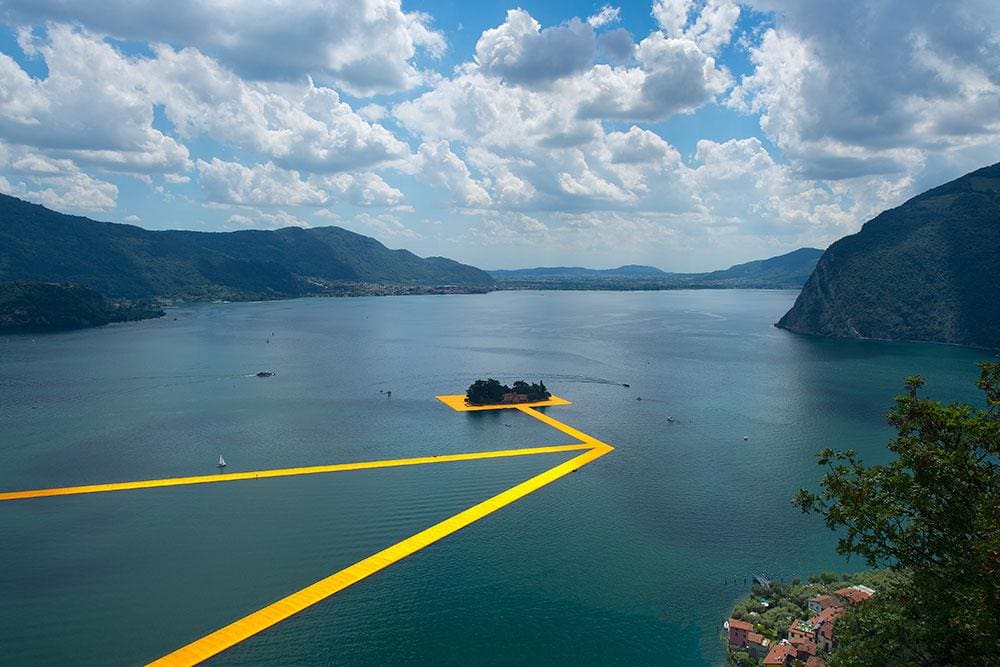
And that means the gallery system too – which Christo is less than enamoured with, given the inevitable politics, fashions and profit-seeking that generally drives it. Instead he has long trod his own path, lucky enough to have a hardcore fan base of loyal art collectors who buy his pieces – or rather the preparatory works, from sketches to plans and models, that form the basis of these pieces – but also having built up a sizeable repository of smaller works at a secure location in Basel, through which he is able to work with Swiss banks to fund the projects.
“It’s the one way I’m happy to use the capitalist world,” he laughs. “But it works well. We operate [to make art] like a real corporation, and like a corporation we work with banks because we need a continuous cash flow. Let’s just say that the art world – the collectors, the galleries, the museums – are notoriously slow payers. Besides, I want control over the [final] work [when it’s in place]. I want people to walk on these works, touch them, feel them – despite their scale, I think they’re particularly intimate. I like the idea of people getting up close.”
That contrarian approach has only further ensured that Christo has for years bewildered much of the art world, all the more so since his work is not easy to categorise: it doesn’t have the permanency of sculpture, yet it’s sculptural; you can’t hang it on your wall – indeed, would-be collectors couldn’t even get it in the biggest of rooms; it’s not even – like other art media of similar commercial complexities, the likes of video – endlessly reproducible. Rather, Christo’s works are closer to a happening or a kind of performance. Further fuelling the denigration of some critics, they’re popular too. They draw crowds – crowds of people who are satisfied by the enormity and daring – of the pieces without having to ponder too much on their meaning or place in the development of art history.#
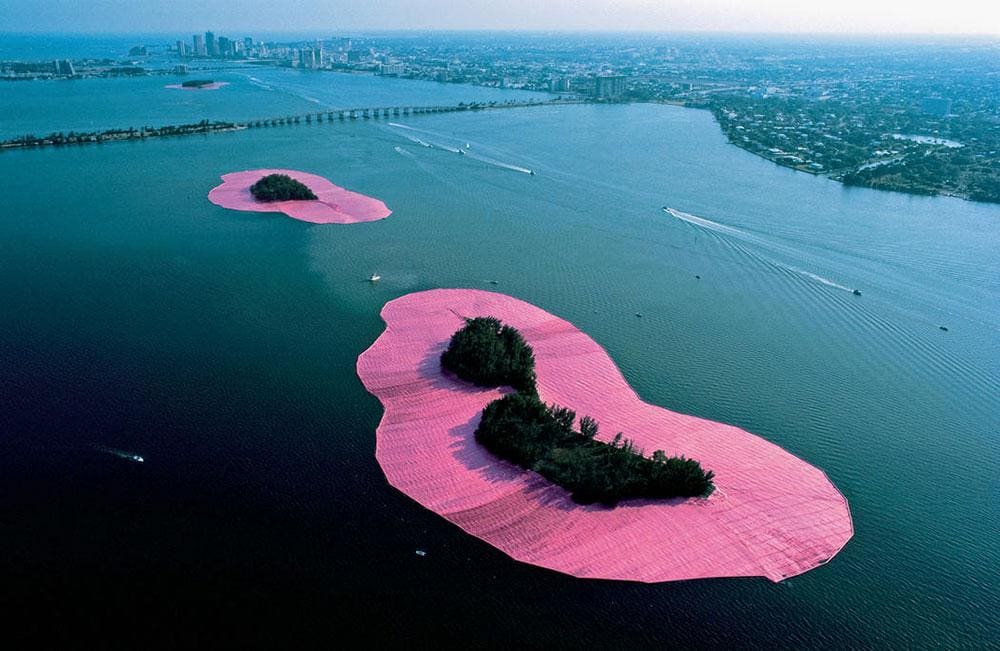
“Some people have objected to the works because they’re useless,” Christo chuckles. “And it’s only because of that uselessness that the pieces’ scale in particular strikes people as impressive. We see much, much bigger structures all the time – buildings, bridges that we’re familiar with – but the scale doesn’t resonate because these things have a purpose. They can all be justified.
“It’s strange but the first critics to have looked at our work were architecture critics, not art critics and sometimes the work does feel more like urban planning. But of course the primary response to these works is aesthetic, because they’re totally rational but absolutely unnecessary. People see what they see in them, and naturally that response flows from the life of the people, the culture they’re part of. It’s not propaganda, but you can’t articulate what, say, wrapping the Reichstag means to a German. But, you know, really I don’t care what reaction the works get – because I won’t give an inch of my artistic freedom to propagandists of any kind.”

